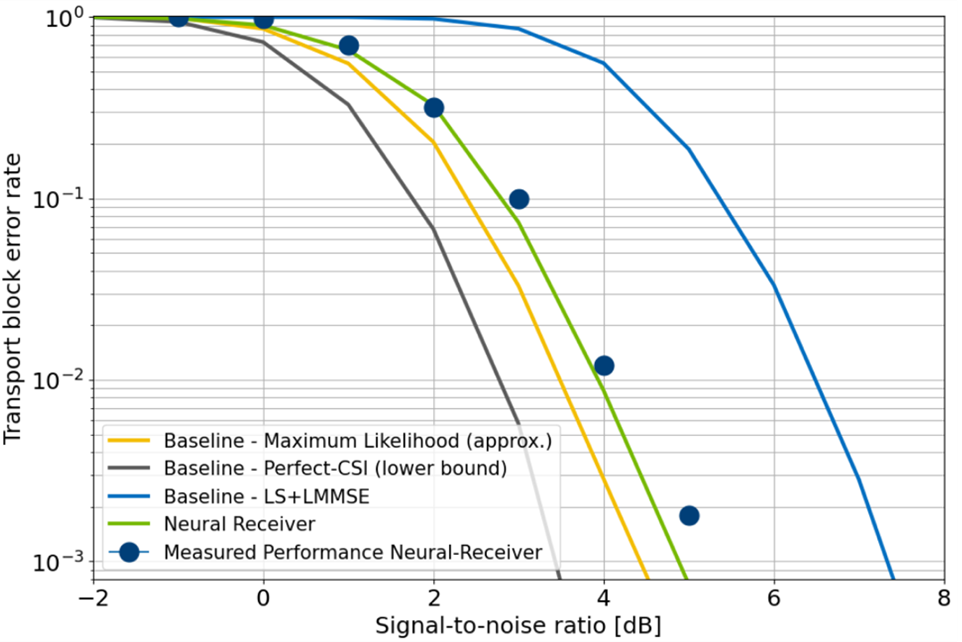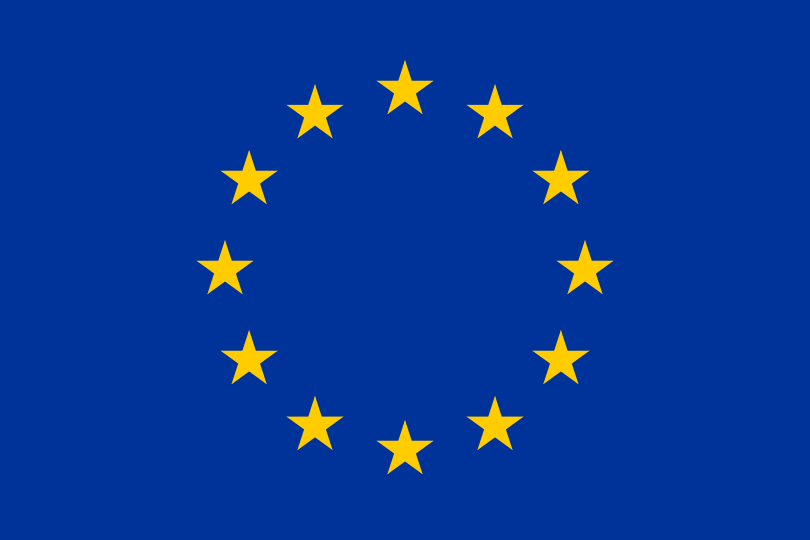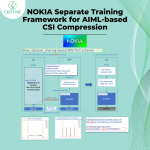NVIDIA neural network (NN)-based multiuser multiple-input multiple-output (MU-MIMO) receiver
One of the objectives of the CENTRIC project is to develop a user-centric communication stack that can be tailored to user-specific needs. For this, we introduce a neural network (NN)-based multiuser multiple-input multiple-output (MU-MIMO) receiver with 5G New Radio (5G NR) physical uplink shared channel (PUSCH) compatibility. To showcase the practicability of the approach, we have presented a hardware-in-the-loop demonstrator at the Brooklyn 6G Summit 2023. A specific focus of the neural network architecture is on flexibility concerning a varying number of users and a configurable number of subcarriers. This flexibility is a key enabler for practical deployment. The proposed architecture does neither require any retraining if additional users join or leave the network, nor if the number of allocated subcarriers or physical resource blocks (PRBs) change. The neural receiver and our experiments are implemented using NVIDIA Sionna library for link-level simulations.
What is a neural receiver?
To reconstruct the transmitted information from a received signal, classical receivers perform a sequence of signal-processing steps. In a neural receiver, these handcrafted signal processing blocks are replaced by neural networks. In particular, only one neural network replaces channel estimation, equalization, and demapping (Figure 1).

Figure 1. Sending and receiving bits of information: traditional and neural receiver
The NVIDIA prototype extends the concept of neural receivers by a multi-user MIMO component and enables 5G NR compatibility. The neural network architecture itself is a combination of graph neural network (GNN) and convolutional neural network (CNN) layers. Intuitively, the GNN offers flexibility regarding a varying number of users as it enables easy reconfiguration. As a result, only 700K trainable weights are required to process an entire 5G slot, which is the entire time/frequency resource consisting of thousands of resource elements in the time-frequency OFDM grid.
The architecture design allows the receiver to be adapted to different system configurations. The number of physical resource blocks is also variable. In fact, the receiver is trained for four PRBs but is evaluated for 217 PRBs.
Trained in simulations, validated in the field

Figure 3. Transport block-error-rates for different receiver implementations
Figure 3 shows the block-error-rate performance of different receivers on a transport block level, that is, including the entire physical (PHY) layer effects. The blue dots show the results from the actual measurement while the solid lines are simulated with Sionna’s built-in channel models.
All systems are evaluated for the same scenario and the same input data, but for different receiver implementations:
- Perfect-CSI(grey): Perfectly known channel state information (CSI) at the receiver and maximum likelihood detection. This is obviously not realistic but provides a lower bound on the performance that practical systems can achieve.
- Maximum likelihood(orange): An approximation of maximum likelihood that achieves great performance but is not practical due to its high computational complexity.
- LS + LMMSE(blue): Least squares (LS) channel estimation with linear minimum mean squared error (LMMSE) detection. It can be considered a practical baseline due to its low complexity.
- Neural receiver(green): The neural receiver performs close to the maximum likelihood performance but with a significantly lower computational complexity.
Looking ahead
We see the neural receiver as a promising technology enabling continuous performance enhancement even post-deployment. By allowing for finetuning to specific environmental contexts—such as varying user speeds and maximum delay spreads—there is the potential for base stations to continually learn and adapt during low-load phases through simple weight updates. Furthermore, the adaptability of this neural receiver paves the way for exploration into revolutionary physical layer concepts, including AI/ML-based waveforms and semantic communications.




